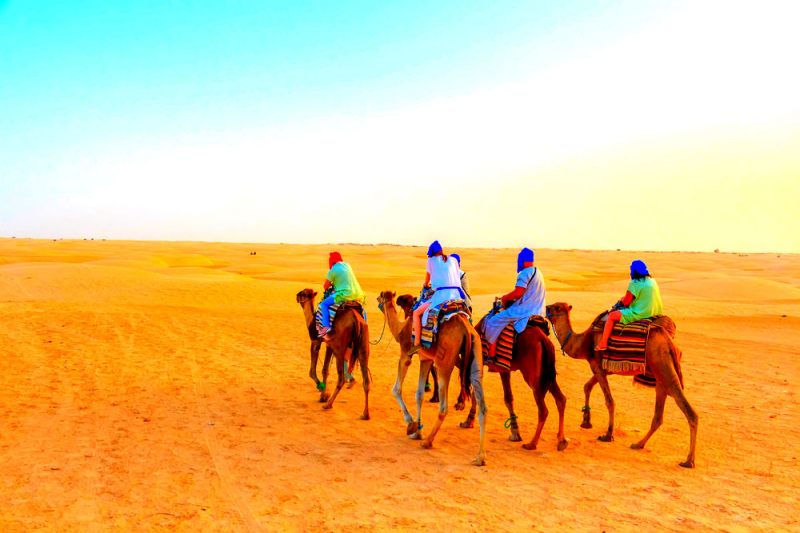
Tunisia is an excellent choice for those who did not have time to relax in the summer and want to enjoy the clear sea and snow-white beaches, have fun at festivals and see ancient cities lost in the desert. Autumn Tunisia is almost as good as European Mediterranean resorts – there are few five-star hotels with excellent service, but there is excellent weather, a warm sea, health resorts, low prices and plenty of entertainment. We’ll tell you why you should go to Tunisia this fall.
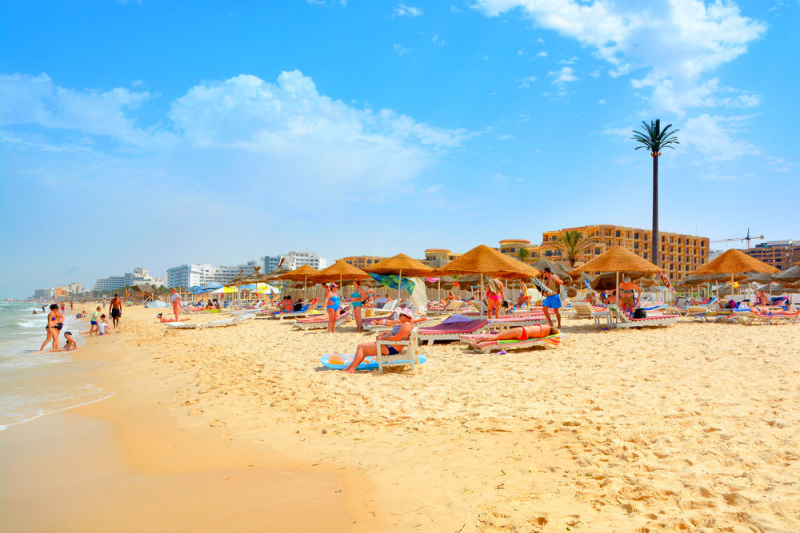
1. Sun, beaches and warm sea
September and October are the best months to relax on the beaches of Tunisia. At this time it is warm and sunny, there is almost no rain and there are few tourists. Prices, which in Tunisia are always lower than in Europe, become even more affordable with the end of the high season. Air temperature is 25-30 °C, water temperature is 25 °C in September and 23 °C in October. There are more than 100 kilometers of sandy beaches on the Mediterranean coast of Tunisia. The best beach resorts are Hammamet, Mahdia, Djerba island. Sports and nightlife lovers should choose the city of Sousse, with discos, excursions and dozens of sports. For those who like diving, Tabarku has clear water, the largest coral reef in the Mediterranean, underwater grottoes with rare fish and sunken ships. Also in Tabarka at the beginning of September there are fun sea festivals – “Trident of Neptune” and “Coral Festival of Underwater Photography”.
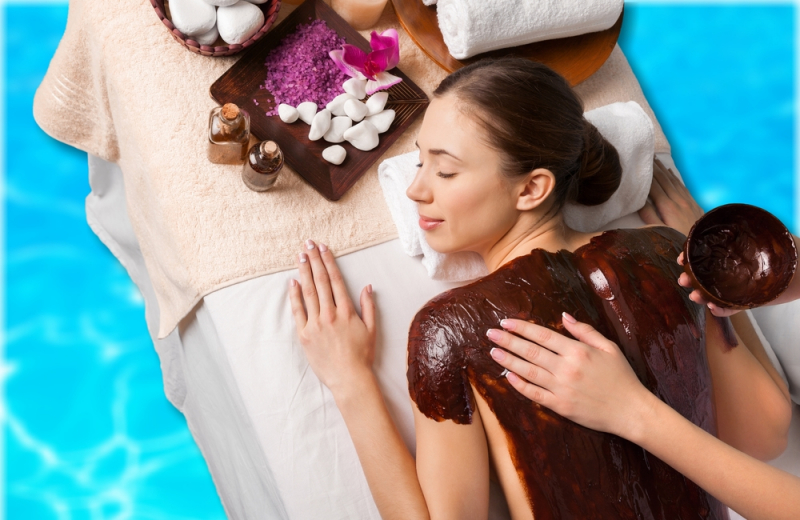
2. Thalassotherapy at low prices
Thalassotherapy (health treatments using sea water, mud and algae) is one of the main reasons why tourists travel to Tunisia. Almost every seaside town has a thalassotherapy center where they use only freshly mined sea mud and the purest water from the depths of the sea. There are several hundred wellness programs here – for every taste and budget. The most popular procedures are hammam, seaweed or clay wrap, Cleopatra baths (with milk and essential oils),
aquatonic (foot pool with sea water and massage devices). The main thalassotherapy centers are located at hotels in Sousse, Monastir, Hammamet, Mahdia.
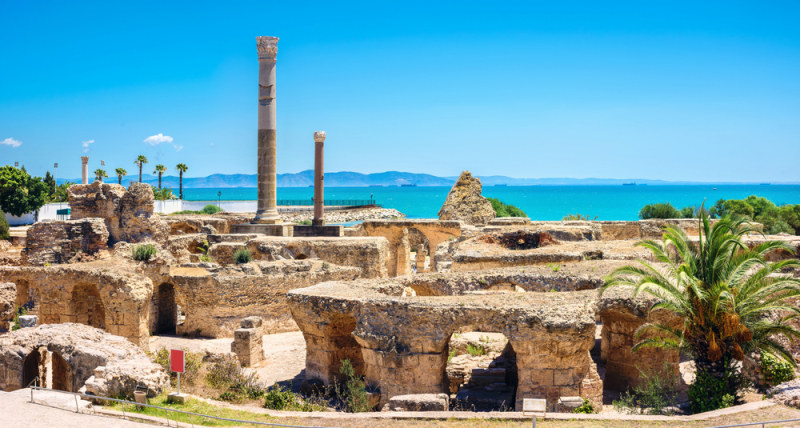
3. Ruins of Carthage, Arab fortresses and Roman mosaics
Tunisia has many architectural monuments from different eras – colonial mansions next to Roman amphitheaters, medieval Arab fortresses and Byzantine cathedrals. In the capital, it is worth visiting the bustling quarters of the old city – the Medina, the ancient Zitouna Mosque and the Saint-Vincent-de-Paul Cathedral. In Djerba there is a huge fortress of Gazi Mustafa, built in the 9th century to protect against pirates. Near the capital of Tunisia with the same name, there are the ruins of the great Carthage – with baths, temples, villas, an aqueduct and an amphitheater. Bardo is home to the famous Museum of Archeology, which houses the world’s largest collection of ancient Roman mosaics, including a portrait of the poet Virgil.
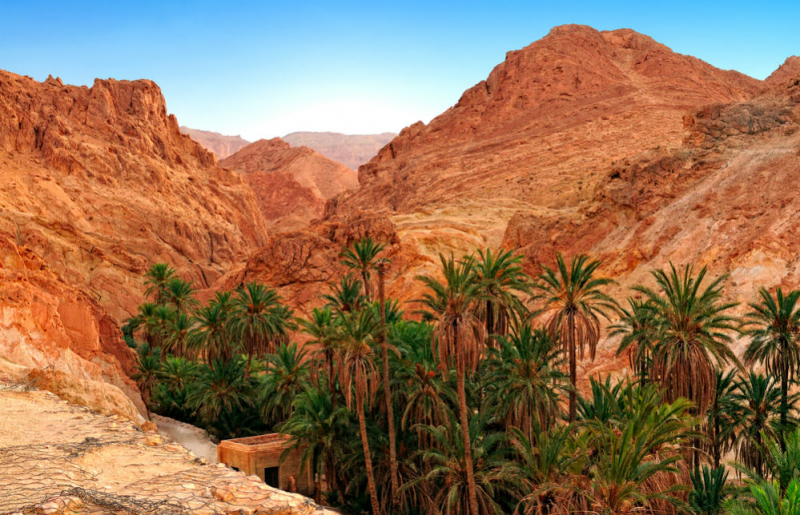
4. Natural wonders: salt lakes, canyons, desert and pink flamingos
Tunisia is a small country that can surprise you with its natural diversity. An hour’s drive away is the Sahara Desert and orange groves, coniferous forests and low mountains, beaches and huge salt lakes. The most beautiful places in Tunisia are the Sahara Desert, with huge shining dunes, where you can go by jeep or on the back of a camel, and Chott el-Jerid, a lake covered with a sparkling salt crust, where mirages appear at sunset. In Mides there is a beautiful mountain gorge with a waterfall, in the Ishkel National Park on the shores of a salt lake, buffaloes and herons live, the rarest species of roses grow, and the lagoons of the city of Djerba and Cape Bon are loved by pink flamingos, which calmly walk along the snow-white beaches, without fear of tourists.
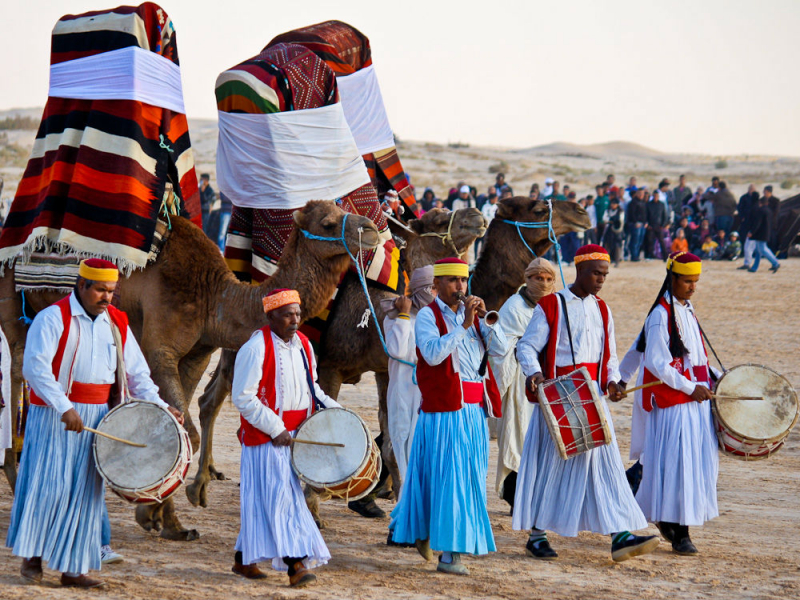
5. Holidays and festivals
In Tunisia, the festival season begins in May and ends in November. Most of them are held at night on beaches and in ancient amphitheaters. In Tabarka, music festivals are held twice – the Jazz Festival in July and the Latin Music Festival in August. In Douz, the “Sahara Festival” is held in November, with traditional sports competitions and dozens of concerts. At the beginning of August, the “International Festival of Music and Dance” takes place in the ancient amphitheater of Carthage. In September, Madinat Al Zahra Park hosts exciting laser and music shows, and Tabarka hosts the Underwater Photography Festival, with workshops, free diving lessons and nightly concerts. Every odd-numbered year, in October, the “International Film Festival of Carthage” takes place.
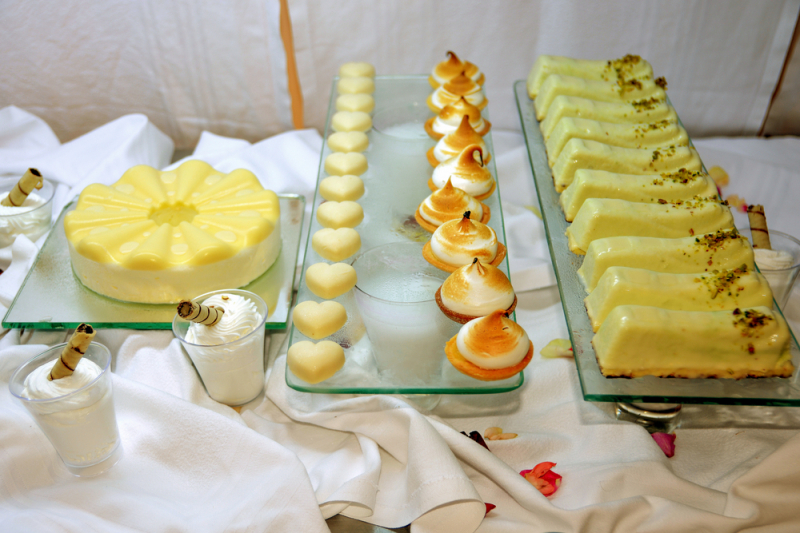
6. Tunisian cuisine
Tunisian cuisine is an amazing mixture of Arabic and French, Turkish and Spanish cuisine. There are even more restaurants in the country than souvenir shops, their prices are low, and the portions are very generous and most often designed for two. The most popular dish in Tunisia is couscous, which is prepared differently in each region – with vegetables, meat, fish and squid, or even honey and nuts. The most popular snacks are harissa (red pepper paste with olive oil and garlic),
brik (a pie made from the finest dough with egg, tuna and potatoes, deep fried) and shorba (thick spicy soup with lamb and vegetables). Fish is everywhere in Tunisia – it is cheap, always fresh, most often it is baked on the grill, in foil and under a layer of salt. The most delicious meat is lamb; amazing steaks are prepared from it, grilled and baked in pots. The most delicious sweets – makrud (wet cookies with dates and nuts),
shamiya (sesame halva) and malbiya (cake with candied orange peel ).

